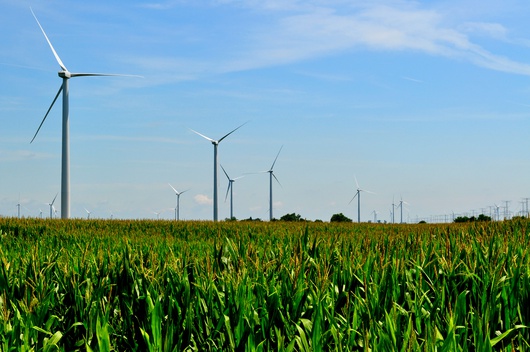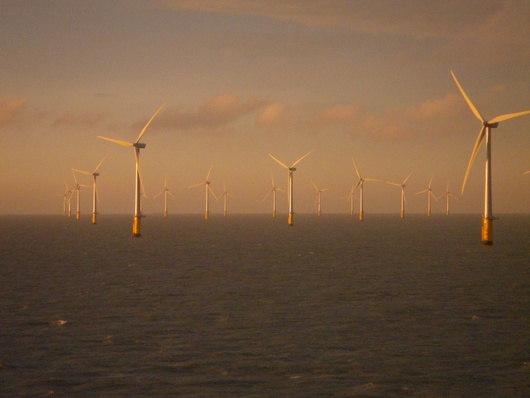
nimbyism vs. wind farms
Published on
The benefits of wind farms are almost universally accepted, and onshore windmills are hailed as the most efficient renewable energy source currently available to us. When Britain is supposed to find 15% of its energy from renewable sources by 2020, it is time to question why more areas aren't jumping at the chance to welcome wind farms into their communities
NIMBYism stands for ‘Not In My Back Yard’ – ism. It is the rejection of instalments such as wind farms or rubbish tips in one's local area, all whilst fully accepting their benefits elsewhere. As a nation, Brits support renewable energy – 82% of us, to be precise. This figure plummets down to only a half of us who are supportive of renewable energy projects in our own communities. Wind farms are big and, some would argue, unattractive, and most new energy ventures – from wind farms to fracking – are proposed in less-populated areas. Tory peer Lord Howell famously put his foot in his mouth by claiming that there were plenty of 'desolate' areas in the north east perfect for fracking operations. A scandal was duly caused.
 The conflict of interest is simple: areas with smaller populations, which are therefore more suitable for exploitation for energy production, are usually rural, and thus beautiful and beloved by their locals. What is perhaps most ironic is that the people whose mission is to protect their area from the invasion of renewable energy production may well be damning their area (no pun intended), along with everyone else's, in the long term.
The conflict of interest is simple: areas with smaller populations, which are therefore more suitable for exploitation for energy production, are usually rural, and thus beautiful and beloved by their locals. What is perhaps most ironic is that the people whose mission is to protect their area from the invasion of renewable energy production may well be damning their area (no pun intended), along with everyone else's, in the long term.
Bill Bryson said it himself: 'Britain still has the most reliably beautiful countryside of anywhere in the world. I would hate to be part of the generation that allowed that to be lost.' Nimbyism is nationalism on a microscopic scale: people are prepared to risk the whole in order to protect whatever part they perceive to be theirs.
The possible solutions
One possibility is doing what the Greenwire project did:
avoid NIMBYism by changing locations. Ireland, perhaps less snobby than its British neighbour, snapped up the opportunity to produce onshore wind energy and sell it to us. More efficient (and thus cheaper) than a similarly sized project offshore, this installation provides Ireland with huge financial rewards. They make the money and the energy. Britain's energy is renewable and our precious countryside is untarnished. The upper classes are content.
The downside of this plan, however, is that 10,000 jobs that could comfortably have gone to Britain's struggling economy were instead exported. Plus, in order to assure the energy provider of good prices, our energy costs necessarily hike.
 Another option is to give hefty incentives to communities. Scottish wind farm operatives have paid out benefits to the tune of over £5 million to the communities receiving them. I bet a wind farm looks far nicer when placed next to a shiny new village hall, along a well-maintained cycle path. One such scheme helped a local cinema to reopen after thirty years.
Another option is to give hefty incentives to communities. Scottish wind farm operatives have paid out benefits to the tune of over £5 million to the communities receiving them. I bet a wind farm looks far nicer when placed next to a shiny new village hall, along a well-maintained cycle path. One such scheme helped a local cinema to reopen after thirty years.
Or is there another way?
England's biggest success story is the Westmill Wind Farm Co-operative in Swindon. 100% community owned, its five towers produce enough energy for 2500 average homes. A fund-raising campaign enabled the community to buy shares from the beginning; it has been their wind farm every step of the way. Watching their video shows that this is a project by the people, for the people. The wind farm is not a blot on their landscape. It is something the community is proud of, and this pride shines through.
That's the way the world goes round
The idea of man's needs spoiling the landscape is by no means a new one. Electricity pylons, train lines and ground-based satellites have all been hated and rallied against as soon as plans for their development pop up. The big difference, of course, is that all of these things contribute to carbon emissions and global warming, whereas wind farms help to minimise them. When the values of the green-life-liver and the green-grass-lover are conflicted, we have a problem: these two groups so often work together towards aims that benefit each other, and indeed every one of us.
The UK has a long way to go to catch up with its European neighbours, which is a shame, given the abundance of wind we have going spare. However, with the government currently focusing much of its efforts on fracking – UK ministers recently admitted that they are looking to overturn trespass laws to allow companies to frack under houses without the permission of their owners – NIMBYs will soon be able to return to the righteous protests of their previous lives, where green policy and green views lie more comfortably hand in hand.



